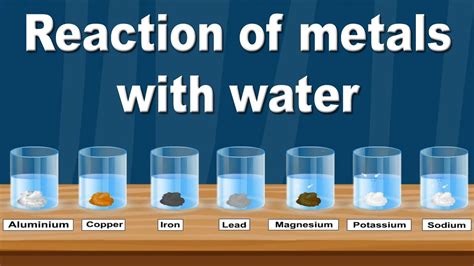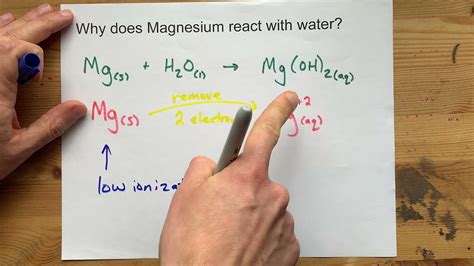lv water reactive | what are water reactive substances lv water reactive All of Group 1 elements—lithium, sodium, potassium, rubidium and cesium react vigorously or even explosively with cold water. In each case, the aqueous metal hydroxide and hydrogen gas are produced, as shown: T6 6 mm Tube Vacuum Port T6 6 mm Tube Exhaust Port G1 1/8 BSPP (05, 07) G2 1/4 BSPP (10, 13) T6 6 mm Tube (05, 07) T8 8 mm Tube (10, 13) Evacuation Time Series / Air Supply Air Ev acuation Time in sec / liter Nozzle Diameter Pressure Consumption to reach different Vacuum Levels [%] [bar] [l/min] 10 20 30 40 50 60 70 80 90
0 · what are water reactive substances
1 · water reactive metals
2 · most reactive metals in water
3 · magnesium and water reactive
4 · list of water reactive materials
5 · examples of water reactive chemicals
LOUIS VUITTON Official USA site - Discover luxury smartphone accessories like phone holders, cases and ring stands. Must have accessories for iPhone.1. BOUTIED Shoulder Tote. First, we have a dupe for the famous Louis Vuitton Neverfull MM Damier Ebene LV Bag, which sells for $2,030. The Neverfull Bag is often known for its signature red leather interior, and I found a Louis Vuitton purse alternative featuring the same couture design.
This page looks at the reactions of the Group 1 elements - lithium, sodium, potassium, rubidium and caesium - with water. It uses these reactions to explore the trend in reactivity in Group 1. All of these metals react vigorously or even explosively with cold water.

All of Group 1 elements—lithium, sodium, potassium, rubidium and cesium react vigorously or even explosively with cold water. In each case, the aqueous metal hydroxide and hydrogen gas are produced, as shown:Water-reactive substances are those that spontaneously undergo a chemical reaction with water, often noted as generating flammable gas. Some are highly reducing in nature. Notable examples include alkali metals, lithium through caesium, and alkaline earth metals, magnesium through barium. Some water-reactive substances are also pyrophoric, like organometallics and sulfuric acid. The use of acid-resistant gloves and face shield is recommended for safe handling; fume hoods are . Revision notes on 6.1.4 Oxides Reacting with Water for the AQA A Level Chemistry syllabus, written by the Chemistry experts at Save My Exams. Group 13 elements are not very reactive with water. In fact, boron (B) does not react at with water. One notable reaction within this group is aluminum's (Al) reaction with water. Aluminum does not appear to react with water because an outer layer of aluminum oxide (Al 2 O 3) solid forms and protects the rest of the metal.
First published on 12th February 2021. Abstract. A review presenting water as the logical reaction medium for the future of organic chemistry. A discussion is offered that covers both the “on . The reaction mechanism for the reduction of Ephedrine with Red Phosphorous, and Hydrogen-Iodide is summarized as follows: Ephedrine reacts with Hydrogen-Iodide to .
This page looks at the reactions of the Group 2 elements - beryllium, magnesium, calcium, strontium and barium - with water (or steam). It uses these reactions to explore the trend in .The reactivity series of metals is a chart listing metals in order of decreasing reactivity. In general, the more reactive a metal is: the more vigorously it reacts with other substances. the.
Upon exposure to light or ionizing radiation, liquid water may undergo a series of transformations involving electronic excitations, ionization of solvated species, and formation of free radicals.
All of Group 1 elements—lithium, sodium, potassium, rubidium and cesium react vigorously or even explosively with cold water. In each case, the aqueous metal hydroxide and hydrogen gas are produced, as shown:This page looks at the reactions of the Group 1 elements - lithium, sodium, potassium, rubidium and caesium - with water. It uses these reactions to explore the trend in reactivity in Group 1. All of these metals react vigorously or even explosively with cold water.Water-reactive substances[1] are those that spontaneously undergo a chemical reaction with water, often noted as generating flammable gas. [2] Some are highly reducing in nature. [3] Notable examples include alkali metals, lithium through caesium, and alkaline earth metals, magnesium through barium. Some water-reactive substances are also .
Revision notes on 6.1.4 Oxides Reacting with Water for the AQA A Level Chemistry syllabus, written by the Chemistry experts at Save My Exams. Group 13 elements are not very reactive with water. In fact, boron (B) does not react at with water. One notable reaction within this group is aluminum's (Al) reaction with water. Aluminum does not appear to react with water because an outer layer of aluminum oxide (Al 2 O 3) solid forms and protects the rest of the metal.First published on 12th February 2021. Abstract. A review presenting water as the logical reaction medium for the future of organic chemistry. A discussion is offered that covers both the “on water” and “in water” phenomena, and how water is playing unique roles in each, specifically with regard to its use in organic synthesis. 1. Introduction. The reaction mechanism for the reduction of Ephedrine with Red Phosphorous, and Hydrogen-Iodide is summarized as follows: Ephedrine reacts with Hydrogen-Iodide to form iodoephedrine (iodomethamphetamine) which is then reduced to methamphetamine [6].
The reactivity series of metals is a chart listing metals in order of decreasing reactivity. In general, the more reactive a metal is: the more vigorously it reacts with other substances. the. Given the low molar mass of its constituent molecules, water has unusually large values of viscosity, surface tension, heat of vaporization, and entropy of vaporization, all of which can be ascribed to the extensive hydrogen bonding interactions present in liquid water.This page looks at the reactions of the Group 2 elements - beryllium, magnesium, calcium, strontium and barium - with water (or steam). It uses these reactions to explore the trend in reactivity in Group 2. The Facts. Beryllium. All of Group 1 elements—lithium, sodium, potassium, rubidium and cesium react vigorously or even explosively with cold water. In each case, the aqueous metal hydroxide and hydrogen gas are produced, as shown:
This page looks at the reactions of the Group 1 elements - lithium, sodium, potassium, rubidium and caesium - with water. It uses these reactions to explore the trend in reactivity in Group 1. All of these metals react vigorously or even explosively with cold water.Water-reactive substances[1] are those that spontaneously undergo a chemical reaction with water, often noted as generating flammable gas. [2] Some are highly reducing in nature. [3] Notable examples include alkali metals, lithium through caesium, and alkaline earth metals, magnesium through barium. Some water-reactive substances are also .
Revision notes on 6.1.4 Oxides Reacting with Water for the AQA A Level Chemistry syllabus, written by the Chemistry experts at Save My Exams. Group 13 elements are not very reactive with water. In fact, boron (B) does not react at with water. One notable reaction within this group is aluminum's (Al) reaction with water. Aluminum does not appear to react with water because an outer layer of aluminum oxide (Al 2 O 3) solid forms and protects the rest of the metal.First published on 12th February 2021. Abstract. A review presenting water as the logical reaction medium for the future of organic chemistry. A discussion is offered that covers both the “on water” and “in water” phenomena, and how water is playing unique roles in each, specifically with regard to its use in organic synthesis. 1. Introduction. The reaction mechanism for the reduction of Ephedrine with Red Phosphorous, and Hydrogen-Iodide is summarized as follows: Ephedrine reacts with Hydrogen-Iodide to form iodoephedrine (iodomethamphetamine) which is then reduced to methamphetamine [6].

The reactivity series of metals is a chart listing metals in order of decreasing reactivity. In general, the more reactive a metal is: the more vigorously it reacts with other substances. the.
what are water reactive substances
Given the low molar mass of its constituent molecules, water has unusually large values of viscosity, surface tension, heat of vaporization, and entropy of vaporization, all of which can be ascribed to the extensive hydrogen bonding interactions present in liquid water.

gucci burgundy rain boots

The Low Voltage Solar Array, or LV Solar Array, is an upgraded version of the Solar Panel, it is added by Compact Solar Arrays. The Low Voltage Solar Array is equivalent to 8 Solar Panels in one block, producing 8 Energy Units per tick. It requires sunlight in order to generate power.
lv water reactive|what are water reactive substances



























